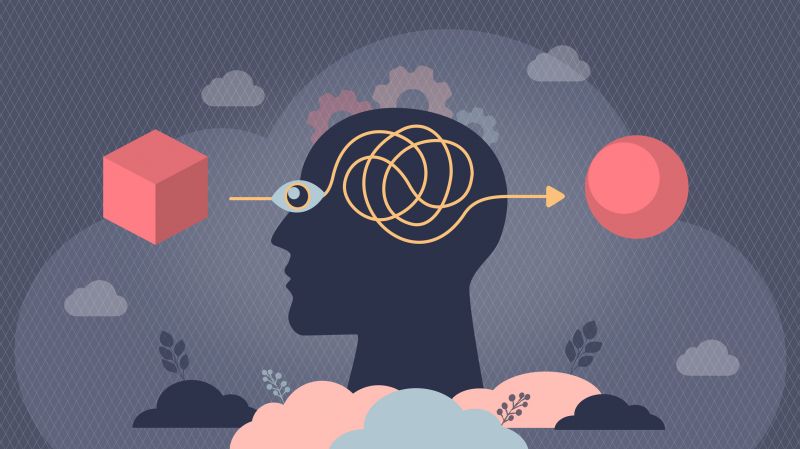Why Do Leaders Make the Wrong Decisions?
Three simple brain biases can help us understand what’s behind so many errors in judgment

The human brain is an incredibly sophisticated biological system for continuously processing new information and determining what to do. But while it generally works amazingly well, our brains are subject to so-called cognitive biases, particularly when presented with new problems and situations.
Decision-making is a key part of business and entrepreneurship, and often these decisions involve dealing with novel situations where cognitive biases are most likely to strike. In this article, I outline three aspects of human thinking that can cause business leaders to make mistakes.
Bias No. 1: Solving new problems based on past experience
The human brain continuously tries to map past experiences onto the present. This means that when we are presented with new problems or challenges, our mind immediately asks: “Did I face something similar in the past and, if yes, what did I do then?” or “What do other people do in situations like this?”
The brain is seeking out “precedents”, like a lawyer examining past legal cases. This type of thinking, which is sometimes referred to as “example-based” or “case-based” thinking, often leads to successful actions in situations that closely match past cases. The idea here is that what worked before will probably work again.
But in new scenarios or in cases that only partly resemble previously encountered problems, precedent-based thinking can be a significant source of bias. And thinking we’ve “seen it all before” can lead us to make the wrong decision often with great confidence — not realizing that we are fighting the “last war” and not dealing with the present conflict.
For example, leaders who are new to a company will too often try to replicate what worked at their last company. And when faced with a new crisis (e.g., a sudden drop in sales), they will likely reach for strategies that worked the last time they had the same problem (sometimes known as “default bias”). But that strategy will not always be appropriate.
To effectively tackle a new problem, business leaders need to reflect on the unique aspects of the situation — being careful not to over-generalize from past experience. Indeed, a tendency to stick to the “tried and tested” can be a real obstacle to positive change.
Bias No. 2: Creating narratives
Another thought pattern that can both positively and adversely impact business decision-making is our mind’s tendency to create stories and narratives.
When dealing with any kind of challenge, we all have a natural tendency to create a “story arc” with heroes, villains and challenges to overcome. But we often don’t notice that our own version of this story is not the only possibility, and it may not be the most appropriate.
For instance, when Covid-19 first started spreading across Europe and North America, politicians created different narratives to explain to the public what was happening. Perhaps the pandemic was a “false alarm” that would rapidly fade away. Or perhaps it was “like the flu” and could not be halted but only “managed” as it ran through the population. Or perhaps it was a deadly disease that could and should be stopped by drastic action.
These narratives, of course, shaped the decisions that were made by governments. Was the main objective to “calm nerves” and avoid an over-reaction; or to slow an inevitable spread so that health services were not overwhelmed; or to shut down society until a vaccination came to the rescue?
Similarly, business leaders create and use narratives, whether they are thinking of the pandemic or any other challenge — and the wrong narrative can inadvertently end up biasing their decisions.
They might, for example, start firmly believing a narrative in which they alone can see the right strategy for the company, and then feel they must push that strategy through against the resistance from others who don’t have their unique insight. This approach can be dangerous if indeed the others turn out to be right.

Subsequently, these narratives might prevent business leaders from identifying evidence to the contrary or lead them to only seek out information that confirms their narratives: the well-known phenomenon of confirmation bias. So, people with different opinions may be rejected as “blockers” (perhaps motivated by some ulterior motive to frustrate progress) while data that seems to contradict the narrative may simply be labelled as unreliable.
Leaders can easily become trapped in their own narratives rather than flexibly shifting their thinking as new information emerges.
To avoid falling into the traps of our narrative-based thought patterns, business leaders can try to reflect on the stories that they tell and consider other possible stories. It is too easy to mistake a story for the incontrovertible truth.
Bias No. 3: The tendency to act too soon
The third potentially problematic behavioural pattern, which stems from the first two, is a tendency for business leaders to do too much too soon.
For instance, a newly hired CEO might immediately start trying to reorganize a company, rebrand it, introduce new business strategies, hire new employees or sell/buy some of the company’s subsidiaries or assets.
Instead of evaluating the strengths and weaknesses of the company and then pondering what is working and what could be improved, business leaders often make big changes quickly (usually based on what worked for them in the past), hoping for quick positive outcomes, which will then be attributed to their efforts. Even if things go badly, at least no one can accuse them of not trying! But this leads to a bias to engage in flurries of change, whether useful or not.
Linking back to bias No. 2, “creating narratives”, many business leaders see their role as that of a guru who is immediately supposed to know “all the answers.” This is usually not a helpful perspective.
In most cases, it is far wiser to take a step back and properly evaluate a situation first, instead of immediately trying to take decisive action. A period of learning about the business challenges, talking with colleagues and hard thinking could lead to far more objective analysis and fruitful choices.
The human mind is incredibly successful in dealing with a hugely complex and uncertain world. But the tricks that we use, drawing on experiences and creating narratives can also lead us astray when we too quickly pick the wrong precedent or create an unhelpful story. And we need to guard against the tendency to rush into action when a more measured and thoughtful approach may be more constructive.
Leadership is hard, and behavioural science certainly doesn’t provide a recipe for success. It can, though, help shape a generation of more reflective and thoughtful leaders.
Nick Chater is a professor of behavioural science at Warwick Business School in Coventry, England and the author of The Mind Is Flat. Warwick and Smith School of Business are members of the Council on Business & Society and share expert commentaries such as this essay.